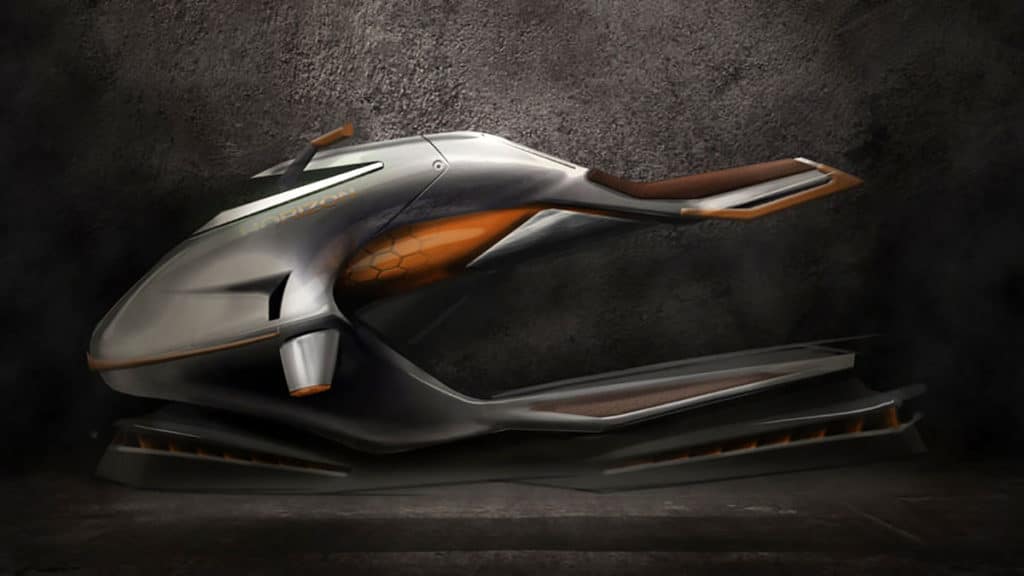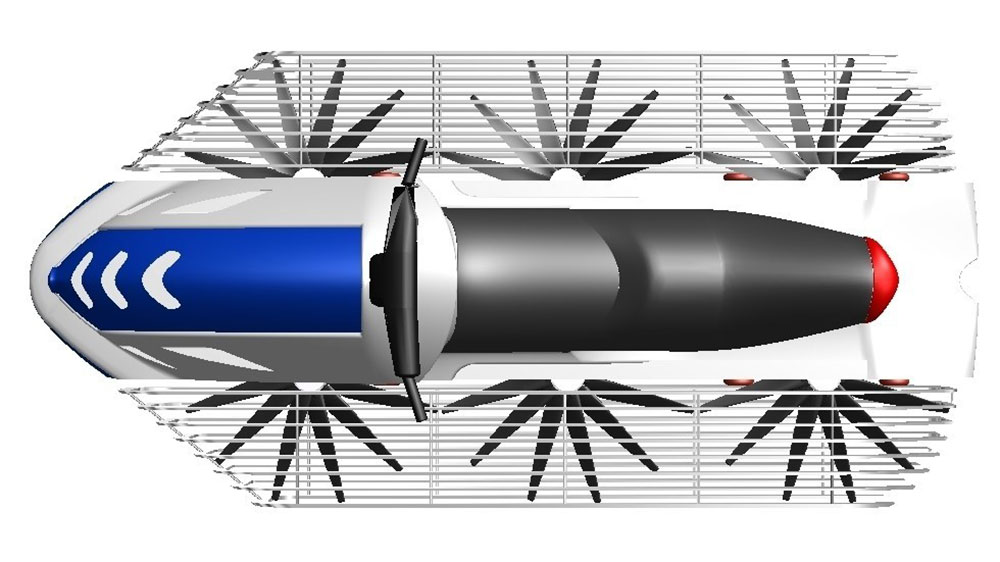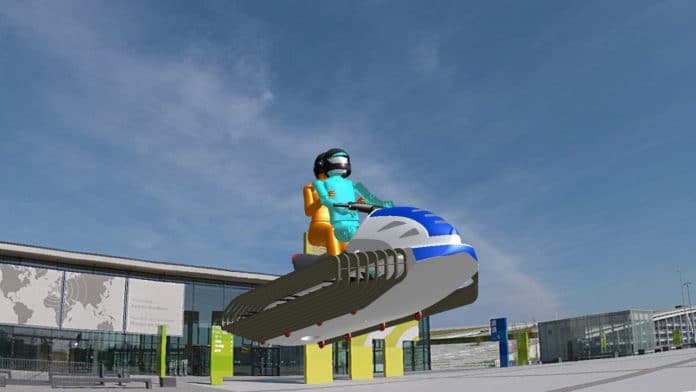Horizon Aeronautics is gearing up to launch an eVTOL Hoverbike, a proposed short-distance commuter vehicle that uses a complex and interesting split-swappable Blainjett variable pitch rotor system that only exposes half of each fan. The novel lift-rotor configuration promises to deliver significant-efficiency and thrust improvements for eVTOL and other vertical-lift designs.
Horizon’s Hoverbike looks like a jet ski and is powered by a compact, hybrid-electric system. The eVTOL aircraft would weigh about 380 kg, measure 9-foot long, four-foot-wide, and would be capable of seating between one and three passengers on board.
This is why Horizon teamed up with Blainjett Aviation, an innovative aerodynamic propulsion technology startup, that developed an innovative solution called the Dynamic Variable Pitch (DVP). The patented technology enables rotorcraft to generate vectored thrust (and thus higher speeds) while in level, forward flight without resorting to large rotating assemblies like a tilt-rotor typically used for helicopters or eVTOLs.

Instead of changing the angle-of-attack of a helicopter or eVTOL rotor to create forward thrust, Blainjett’s DVP concept changes the pitch of the rotor blades through one half of the rotor arc using a proprietary cam and flexible plate mechanism. The concept suits Horizon’s urban-centric hoverbike well since the very-low flying vehicle needs to remain level to accommodate its riders.
“Horizon Aeronautics has real space and power constraints,” Blainjett president Cary Zachary explains. “When we realized that we could nest the lift rotors in a certain way that maximizes space available and combine their placement with our vectored thrust concept, we knew we had something unique.”
The Blainjett team came up with a design that situated rotors in-line along the belly of the hoverbike. Rather than having each rotor fully exposed as on a helicopter or eVTOL, they decided to enclose half of each multi-blade rotor within the body of the hoverbike. The idea employs DVP, increasing blade pitch as rotors pass through the exposed outer-half of the spinning rotor arc and returning rotor pitch to neutral as they pass through a fairing within the hoverbike body. This unusual hemispherical lift-rotor configuration allows lift and vectored thrust to be generated by just one-half of the rotor.

Compared to complex many-rotor or ducted fan designs, Blainjett achieves greater thrust and power distribution efficiency with a small number of larger hemispherical rotors.
“It turned out when we compared our thrust output and efficiency to ducted fans and smaller rotors; we were 2-3 times more efficient with 2-3 times more power density while fitting in the same available space. There’s also a reduction in aerodynamic drag in forward flight,” Zachary says.
Horizon Aeronautics plans to roll out a fully functional prototype integrating Blainjett’s patent-pending hemispherical rotor design in late 2022. As the joint venture proceeds, Blainjett is embarking on additional proof-of-concept work for hemispherical rotor application in the burgeoning Advanced Air Mobility market.
